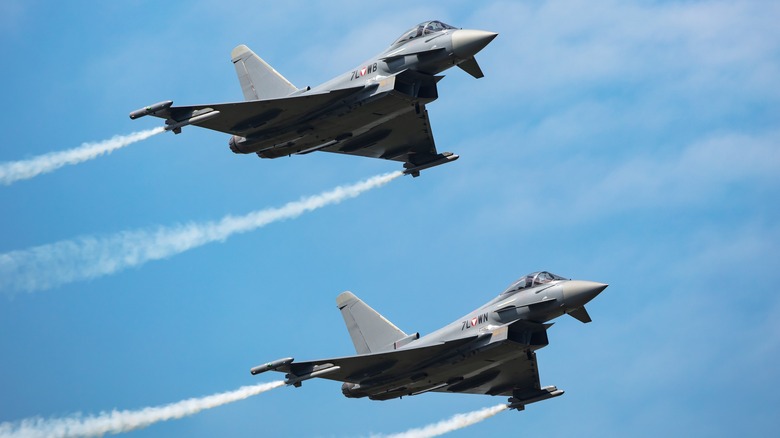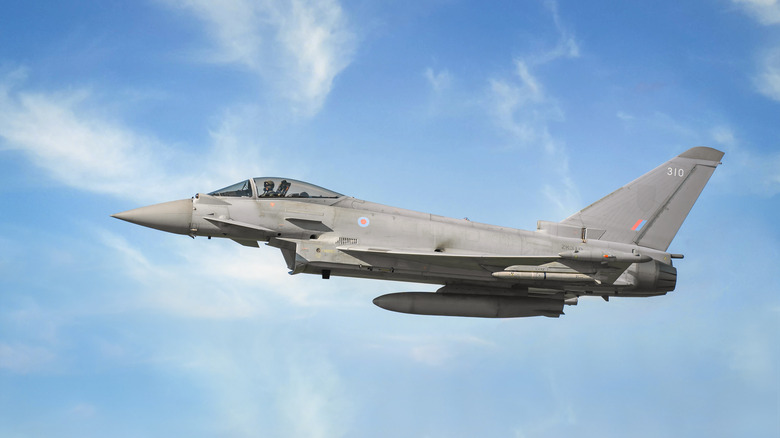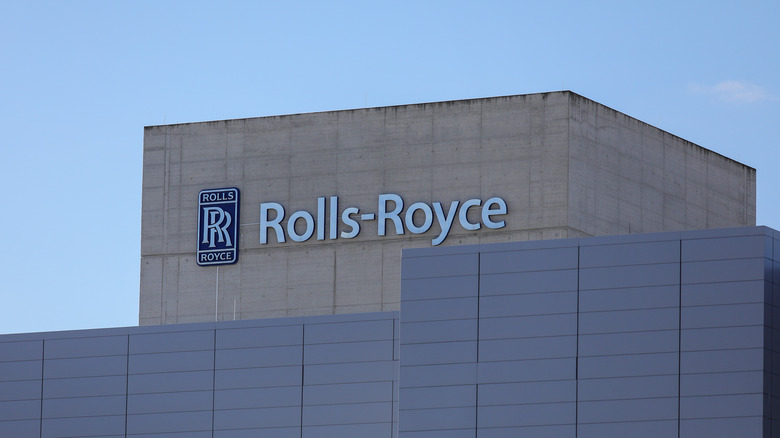Which Fighter Jets Use Rolls-Royce Engines?
The brand Rolls-Royce is associated with elegant, luxurious automobiles, but the company that manufactures these vehicles is actually called Rolls-Royce Motor Cars Ltd, and is a subsidiary of the BMW Group. Rolls-Royce Holdings plc, meanwhile, is an aerospace and defense company.
Rolls-Royce was established in 1906, after aviation pioneer Charles Rolls and engineer Henry Royce struck up a partnership. The two men had met two years earlier through a man named Henry Edmunds, who was a shareholder in Royce's company and a friend of Rolls. Legend has it that as soon as Rolls laid eyes on one of Royce's own twin-cylinder 10hp motor cars, he agreed to sell as many as the engineer could produce under the name Rolls-Royce.
Rolls-Royce entered the military aircraft sector during World War I, when it produced its first aircraft engine. Called the Eagle, the engine powered a number of British aircraft during that time, including the well-known Sopwith Atlantic, Blackburn Blackbird, Royal Aircraft Factory F.E.2d, Felixstowe F.2A, and Handley Page H.P.12 O/400.
History buffs might also recall that later Rolls-Royce developed the Merlin engine that helped the allies win World War II, as it powered aircraft such as the Spitfire and Lancaster. Additionally, Rolls-Royce designed the massive Pegasus jet engine, which was used by the Royal Air Force (RAF) and the United States Marine Corps (USMC) for decades.
With this in mind, it should come as no surprise that Rolls-Royce engines power some of the most advanced fighter jets in the world.
Fighter jets that use Rolls-Royce engines
Which fighter jets use Rolls-Royce engines, then?
The Eurofighter Typhoon, for one, uses the EJ200 engine. This collaborative engine is largely based on the Rolls-Royce XG-40 technology, developed in the 1980s. The Eurofighter Typhoon is a sought-after asset not just in Europe, but also in countries like Saudi Arabia, Oman, and Qatar.
The Sepecat Jaguar, developed as a joint French and British project, uses two Rolls-Royce Turbomeca Adour engines. The Sepecat Jaguar was first introduced in 1968. Production ceased in 1981, but around 120 aircraft are still in use by the Indian Air Force.
The Panavia Tornado fighter jet — originally a product of collaboration between Great Britain, Germany, and Italy — is actually a family of multi-role fighter jets. The aircraft are powered by two RB199 engines, which were developed jointly by MTU, Avio, and Rolls-Royce. Having entered into service in 1979, the Tornado has achieved over seven million flying hours so far.
Rolls-Royce is a major player in the defense sector
Rolls became the first British pilot to die in a flying accident in 1910, when his Wright Flyer crashed. Royce died of natural causes in 1933. Nevertheless, their commitment to world-class engineering lives on, allowing Rolls-Royce to sit comfortably in both the motor car and jet engine sectors to this day.
Rolls-Royce is now a major defense contractor. In fact, Defense News estimates it to be the 23rd largest defense contractor in the world today. For example, the company received U.S. military contracts valued at $1.8 billion in 2022. More recently, in May 2024, Rolls-Royce was selected to participate in the U.S. Air Force's Survivable Airborne Operations Center (SAOC) project. Here, it will provide technology for a new version of an aircraft that has been nicknamed the Doomsday Plane.
In any case, it is safe to say that Rolls-Royce will remain a major player in the defense sector for the foreseeable future.


